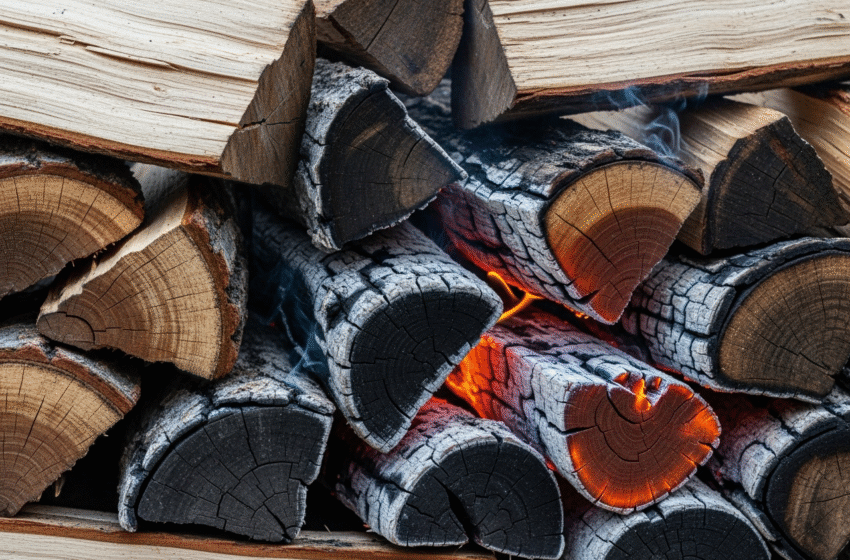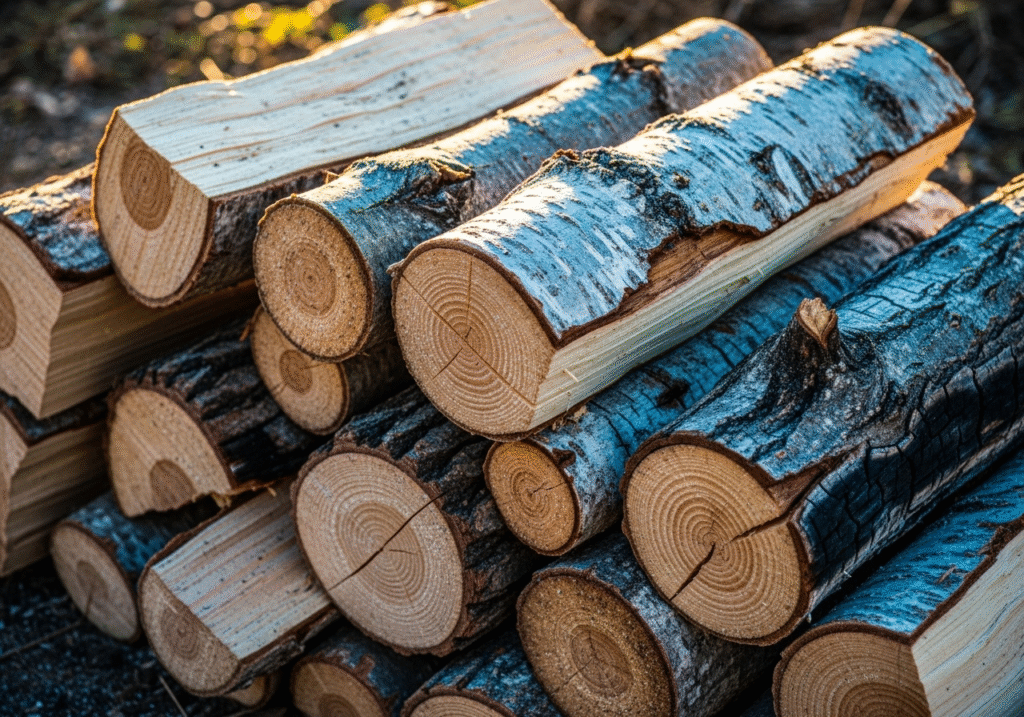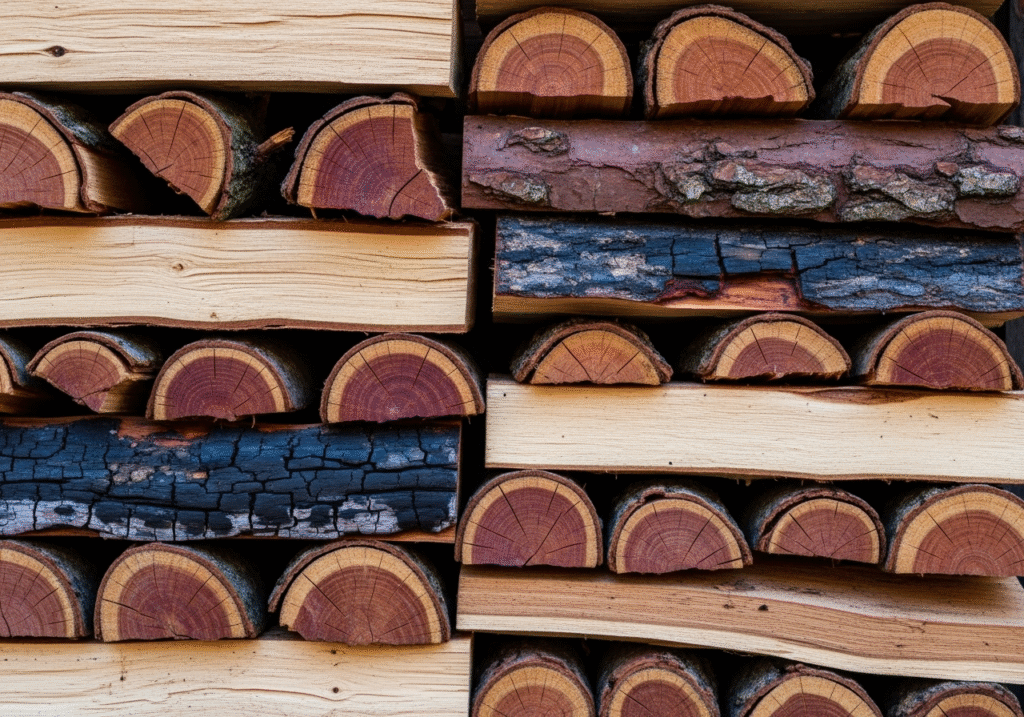Ash Firewood: The Secret to Perfect Fires That Experts Won’t Share

Owala FreeSip Insulated Stainless Steel Water Bottle with Straw, BPA-Free Sports Water Bottle, Great for Travel, 24 Oz, Denim
$29.99 (as of November 11, 2025 20:13 GMT +00:00 - More infoProduct prices and availability are accurate as of the date/time indicated and are subject to change. Any price and availability information displayed on [relevant Amazon Site(s), as applicable] at the time of purchase will apply to the purchase of this product.)STANLEY Quencher H2.0 Tumbler with Handle and Straw 40 oz | Flowstate 3-Position Lid | Cup Holder Compatible for Travel | Insulated Stainless Steel Cup | BPA-Free | Plum
$26.55 (as of November 11, 2025 20:13 GMT +00:00 - More infoProduct prices and availability are accurate as of the date/time indicated and are subject to change. Any price and availability information displayed on [relevant Amazon Site(s), as applicable] at the time of purchase will apply to the purchase of this product.)Rubbermaid Brilliance Food Storage Containers BPA Free Airtight Lids Ideal for Lunch Meal Prep & Leftovers Set of 5 (3.2 Cup)
$27.99 (as of November 11, 2025 20:13 GMT +00:00 - More infoProduct prices and availability are accurate as of the date/time indicated and are subject to change. Any price and availability information displayed on [relevant Amazon Site(s), as applicable] at the time of purchase will apply to the purchase of this product.)Etekcity Food Kitchen Scale, Digital Grams and Ounces for Weight Loss, Baking, Cooking, Keto and Meal Prep, LCD Display, Medium, 304 Stainless Steel
$13.99 (as of November 11, 2025 20:13 GMT +00:00 - More infoProduct prices and availability are accurate as of the date/time indicated and are subject to change. Any price and availability information displayed on [relevant Amazon Site(s), as applicable] at the time of purchase will apply to the purchase of this product.)Alpha Grillers Meat Thermometer Digital - Instant Read Food Thermometer for Cooking and Grilling Stocking Stuffers for Men Christmas Gifts for Men
$13.58 (as of November 11, 2025 20:13 GMT +00:00 - More infoProduct prices and availability are accurate as of the date/time indicated and are subject to change. Any price and availability information displayed on [relevant Amazon Site(s), as applicable] at the time of purchase will apply to the purchase of this product.)Crock-Pot 7 Quart Oval Manual Slow Cooker, Stainless Steel (SCV700-S-BR), Versatile Cookware for Large Families or Entertaining
$47.99 (as of November 11, 2025 20:13 GMT +00:00 - More infoProduct prices and availability are accurate as of the date/time indicated and are subject to change. Any price and availability information displayed on [relevant Amazon Site(s), as applicable] at the time of purchase will apply to the purchase of this product.)KitchenAid Classic Multifunction Can Opener and Bottle Opener Easy to Use, Razor Sharp Stainless Steel Cutting Wheel, Soft Ergonomic Handles, Black
$14.35 (as of November 11, 2025 20:13 GMT +00:00 - More infoProduct prices and availability are accurate as of the date/time indicated and are subject to change. Any price and availability information displayed on [relevant Amazon Site(s), as applicable] at the time of purchase will apply to the purchase of this product.)Owala SmoothSip Slider Insulated Stainless Steel Coffee Tumbler, Reusable Iced Coffee Cup, Hot Coffee Travel Mug, BPA Free 12 oz, Vanilla Bean
$24.99 (as of November 11, 2025 20:13 GMT +00:00 - More infoProduct prices and availability are accurate as of the date/time indicated and are subject to change. Any price and availability information displayed on [relevant Amazon Site(s), as applicable] at the time of purchase will apply to the purchase of this product.)HydroJug Traveler - 32 oz Water Bottle with Handle & Flip Straw - Fits in Cup Holder, Leak Resistant Tumbler-Reusable Insulated Stainless Steel & Rubber Base - Gifts for Women & Men, Pink Sand
$34.99 (as of November 11, 2025 20:13 GMT +00:00 - More infoProduct prices and availability are accurate as of the date/time indicated and are subject to change. Any price and availability information displayed on [relevant Amazon Site(s), as applicable] at the time of purchase will apply to the purchase of this product.)ThermoPro TP19H Digital Meat Thermometer for Cooking with Ambidextrous Backlit and Motion Sensing Kitchen Cooking Food Thermometer for BBQ Grill Smoker Oil Fry Candy Instant Read Thermometer
$14.99 (as of November 11, 2025 20:13 GMT +00:00 - More infoProduct prices and availability are accurate as of the date/time indicated and are subject to change. Any price and availability information displayed on [relevant Amazon Site(s), as applicable] at the time of purchase will apply to the purchase of this product.)There’s a reason seasoned firewood enthusiasts speak about ash firewood with reverent tones. This remarkable hardwood has earned its legendary status through a perfect combination of high heat output, easy ignition, and minimal maintenance that makes it the gold standard for heating efficiency. Whether you’re warming your home through bitter winter months or enjoying a cozy backyard fire, ash delivers an exceptional burning experience that outperforms most other commonly available firewoods.
This definitive guide will explore every aspect of ash firewood, from its botanical background and heat performance to processing techniques and cost-effectiveness. You’ll discover scientific data comparing its BTU output against other species, learn proper seasoning methods to maximize efficiency, and understand why this wood has been favored for generations by those who truly understand firewood quality. By the end of this article, you’ll be equipped with the knowledge to select, process, and burn ash firewood like a true expert, ensuring every fire you light provides maximum warmth with minimum effort.
Chapter 1: Understanding Ash Firewood – More Than Just Another Log
Ash wood belongs to the Fraxinus genus, which comprises approximately 65 species of trees native to North America, Europe, and Asia. These deciduous hardwoods are known for their strength, durability, and aesthetic appeal, qualities that make them valuable for everything from fine furniture to premium firewood .
The Botanical Background
Ash trees are members of the Oleaceae family, which surprisingly includes olive trees. This connection might explain why well-seasoned ash occasionally emits a subtly pleasant aroma when burned, though it’s much less pronounced than scented woods like cedar or pine . The most common species used for firewood in North America include:
- White Ash (Fraxinus americana): Prized for its excellent burning qualities and high heat output
- Green Ash (Fraxinus pennsylvanica): Slightly lower density but still outstanding firewood
- Black Ash (Fraxinus nigra): More common in northern regions with good burning characteristics
In Europe, the dominant species is European Ash (Fraxinus excelsior), which shares similar burning qualities with its American counterparts and has been a traditional firewood choice for centuries .
Identifying Ash Firewood
Recognizing ash wood ensures you’re getting the quality you expect. Several distinctive features make identification straightforward:
- Color: The heartwood typically ranges from light to medium brown, while the sapwood can be nearly white . As the wood seasons, it often darkens to a richer brown hue .
- Grain Pattern: Ash typically displays a straight, regular grain that occasionally exhibits interesting patterns, including the occasional wavy figure that becomes more visible when split .
- Texture: The wood has a moderately coarse, open-pored texture that feels substantial yet workable .
- Weight: Ash has a good heft for its size—lighter than oak but heavier than most softwoods—providing a reliable indicator of its density and potential heat output .
One of the most reliable identification methods involves examining the end grain, which often shows a distinctive pattern of growth rings that are clearly visible and evenly spaced .
Chapter 2: BTU and Performance Analysis – The Numbers Behind the Heat

When evaluating firewood, the British Thermal Unit (BTU) measurement provides an objective standard for comparing heat potential between different wood species. One BTU represents the amount of energy required to raise the temperature of one pound of water by one degree Fahrenheit .
Ash Firewood BTU Ratings
The heat output of ash varies slightly between species but consistently ranks among the top performers:
Table: Ash Firewood BTU Comparison by Species
These numbers place white ash in the high heat output category, comparable to other premium hardwoods like sugar maple (24.0 million BTU/cord) and yellow birch (23.6 million BTU/cord), though slightly below the densest species like hickory (27.7 million BTU/cord) and white oak (25.7 million BTU/cord) .
Comparative Performance Analysis
How does ash truly compare to other common firewood options? The following chart illustrates its standing in the broader firewood landscape:
Table: Firewood Heat Value Comparison (Million BTU per Cord)
This comparison reveals ash’s distinctive advantage: it delivers excellent heat output while remaining relatively easy to process, a combination that many higher-BTU woods can’t match .
Chapter 3: The Burning Characteristics – What Makes Ash Exceptional
Beyond raw BTU numbers, ash possesses several burning qualities that make it particularly user-friendly and efficient for both novice and experienced firewood users.
Easy Ignition and Consistent Burns
One of ash’s most praised attributes is its readiness to burn, even with higher moisture content compared to other woods. While properly seasoned ash (with moisture content below 20%) obviously ignites most easily, even partially seasoned ash will often catch fire when many other species would simply smolder .
This characteristic stems from the wood’s cellular structure, which allows it to burn efficiently without excessive smoke production. Ash produces minimal smoke when properly seasoned, making it more pleasant to burn and reducing creosote buildup in chimneys .
Long Burn Time and Superior Coaling Properties
Ash not only lights easily but also burns for an extended duration thanks to its density. A well-built fire with seasoned ash logs can maintain heat for several hours without requiring additional fuel .
Perhaps even more impressive are its coaling properties. As ash burns, it forms substantial, long-lasting coal beds that radiate consistent heat and provide an excellent base for maintaining fires over extended periods. This quality makes it particularly valuable for overnight burning in wood stoves, where sustained heat is desirable .
Low Resin Content and Minimal Sparking
Unlike many softwoods and some hardwoods, ash contains very low resin levels, contributing to its clean-burning characteristics . This low resin content means:
- Reduced creosote formation in chimneys and flues
- Minimal sparking and popping during burning, enhancing safety
- Less maintenance for wood-burning appliances
These qualities make ash an exceptionally safe choice for open hearths and wood stoves alike.
Chapter 4: Processing and Seasoning – Maximizing Ash’s Potential

Proper processing and seasoning are crucial to unlocking ash firewood’s full potential. Fortunately, ash is more forgiving and easier to work with than many other high-quality firewoods.
Cutting and Splitting
Ash is widely regarded as one of the easiest hardwoods to split by hand, thanks to its relatively straight grain and minimal interlocking wood fibers . This characteristic makes it an excellent choice for those who process their own firewood without heavy machinery.
Even large ash rounds typically yield to a few well-placed blows with a splitting maul. The wood’s workability means you can process larger quantities in less time compared to challenging woods like elm or oak, which often require mechanical splitters .
Seasoning Timeline and Techniques
One of ash’s most celebrated qualities is its ability to season relatively quickly compared to other dense hardwoods. While oak may require 12-24 months to properly season, ash can often reach suitable moisture levels (below 20%) in 6-12 months under ideal conditions .
The seasoning process follows a predictable visual progression:
- Freshly cut: Light-colored wood with high moisture content
- 3-6 months: Darkening color with visible checking (small cracks) at the ends as moisture evaporates
- Properly seasoned: Rich, medium-brown color with more pronounced checking at the ends
Proper stacking is essential for efficient seasoning. Create a stable stack with good air circulation on all sides, preferably off the ground on a rack or foundation of 2x4s . While the top should be protected from rain, the sides should remain open to allow airflow.
Moisture Content Verification
While ash is known for being burnable even when not fully seasoned, for optimal efficiency and heat output, verifying moisture content is recommended. The traditional method of banging two pieces together (dry wood produces a hollow “clunk” rather than a dull “thud”) works reasonably well with ash due to its acoustic properties .
For precise measurement, a digital moisture meter provides accurate readings. Properly seasoned ash should measure below 20% moisture content, with ideal levels around 15-18% for the cleanest burn .
Chapter 5: Practical Applications – Where Ash Firewood Excels
Understanding ash’s burning characteristics allows you to deploy it most effectively in various scenarios, from primary home heating to recreational fires.
Primary Home Heating
For those relying on wood as a significant heat source, ash’s high BTU output and long burn time make it an excellent choice . Its consistent performance and easy ignition simplify daily fire management, while its clean-burning properties reduce maintenance demands on wood stoves and fireplace inserts.
When used for primary heating, mixing ash with even higher-BTU woods like hickory or oak can create an optimal blend—using ash for easier ignition and consistent burns, supplemented by denser woods for extended overnight heating.
Cooking and Food Smoking
Ash’s clean burn and minimal strong flavors make it surprisingly suitable for cooking applications . While it doesn’t impart the distinctive smoky flavor of woods like hickory or mesquite, it provides excellent steady heat for:
- Wood-fired ovens and pizza ovens where consistent temperature is crucial
- Smoking foods that benefit from subtle smoke influence rather than overpowering flavors
- General campfire cooking where predictable flame behavior is valuable
For culinary uses, ensure the wood is fully seasoned to avoid any bitter flavors from incomplete combustion.
Recreational and Outdoor Fires
For outdoor fire pits and casual backyard fires, ash’s minimal sparking and pleasant flame presentation make it both safe and enjoyable . The flames tend to be consistently lively without being excessively aggressive, creating the perfect ambiance for social gatherings.
Its easy ignition means less time struggling to start fires and more time enjoying them—a particular advantage when dealing with potentially damp outdoor conditions where other woods might prove stubborn.
Chapter 6: Cost Analysis and Value Assessment

When evaluating firewood options, understanding the cost-to-value relationship helps determine whether premium woods like ash justify their typically higher price point.
Price Comparison with Other Firewoods
Ash generally commands prices in the mid-to-upper range of firewood costs, typically comparable to other premium hardwoods like maple and cherry, but often slightly less than the densest woods like oak and hickory, which require longer seasoning periods .
The pricing reflects not just ash’s excellent burning qualities but also its relative scarcity in regions affected by the emerald ash borer infestation, which has devastated native ash populations in many areas .
Long-Term Value Considerations
While the initial cost per cord might be higher than some alternatives, ash delivers exceptional value through:
- Reduced processing time and effort due to easy splitting
- Faster seasoning means sooner usability and less storage space tied up for extended periods
- Higher usable energy per cord compared to many similarly priced woods
- Less maintenance on wood-burning appliances due to cleaner combustion
For those who process their own wood, the time savings in splitting alone can justify seeking out ash, as the same amount of work yields more ready-to-burn firewood compared to more challenging species.
Chapter 7: Environmental Impact and Sustainability
The environmental considerations surrounding ash firewood have evolved significantly in recent years due to ecological threats, making responsible sourcing particularly important.
The Emerald Ash Borer Impact
The emerald ash borer (EAB), an invasive beetle native to Asia, has killed hundreds of millions of ash trees across North America since its discovery in 2002 . This epidemic has dramatically altered the ash landscape:
- Massive tree mortality has made dead standing ash increasingly common
- Harvesting dead ash for firewood can be sustainable but requires prompt processing before decay sets in
- Transport restrictions exist in many areas to prevent further spread of EAB
When sourcing ash firewood, understanding its origin helps ensure you’re not inadvertently contributing to the spread of this destructive pest.
Sustainable Harvesting Practices
Responsible ash firewood use involves:
- Sourcing locally to minimize transportation impact and prevent pest spread
- Utilizing already fallen or doomed trees rather than cutting healthy specimens
- Supporting sustainable forest management practices when purchasing
- Considering plantation-grown ash where available as a renewable option
Despite the ecological challenges, using ash firewood from properly managed sources remains an environmentally sound choice, as wood heat represents a carbon-neutral energy source when harvested responsibly.
Conclusion: Why Ash Firewood Remains a Premier Choice
Ash firewood’s enduring popularity stems from its rare combination of high performance and user-friendly characteristics. Its excellent heat output, easy ignition, straightforward processing, and clean-burning properties create a complete package that few other woods can match.
While the perfect firewood choice depends on individual needs, local availability, and specific applications, ash consistently delivers exceptional value across nearly all burning scenarios. Whether you’re heating your home through winter, enjoying casual backyard fires, or using wood for cooking, ash performs reliably with minimal fuss.
The next time you’re selecting firewood, remember ash’s distinctive advantages—that unique balance of qualities that has made it a favored choice among firewood connoisseurs for generations. By understanding its characteristics and proper handling, you can fully leverage this remarkable wood’s potential, turning the simple act of burning firewood into an efficient, enjoyable, and deeply satisfying experience.













